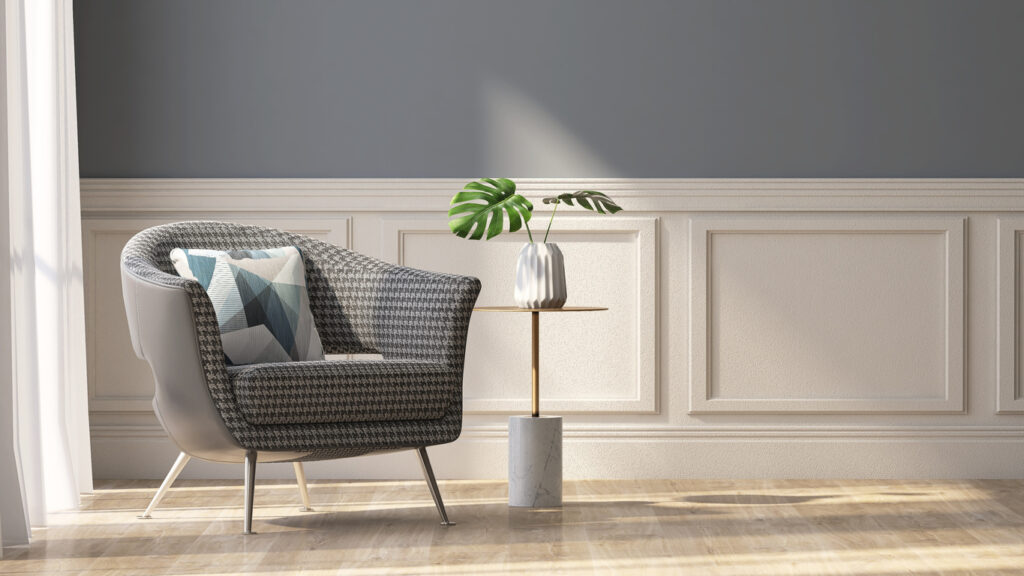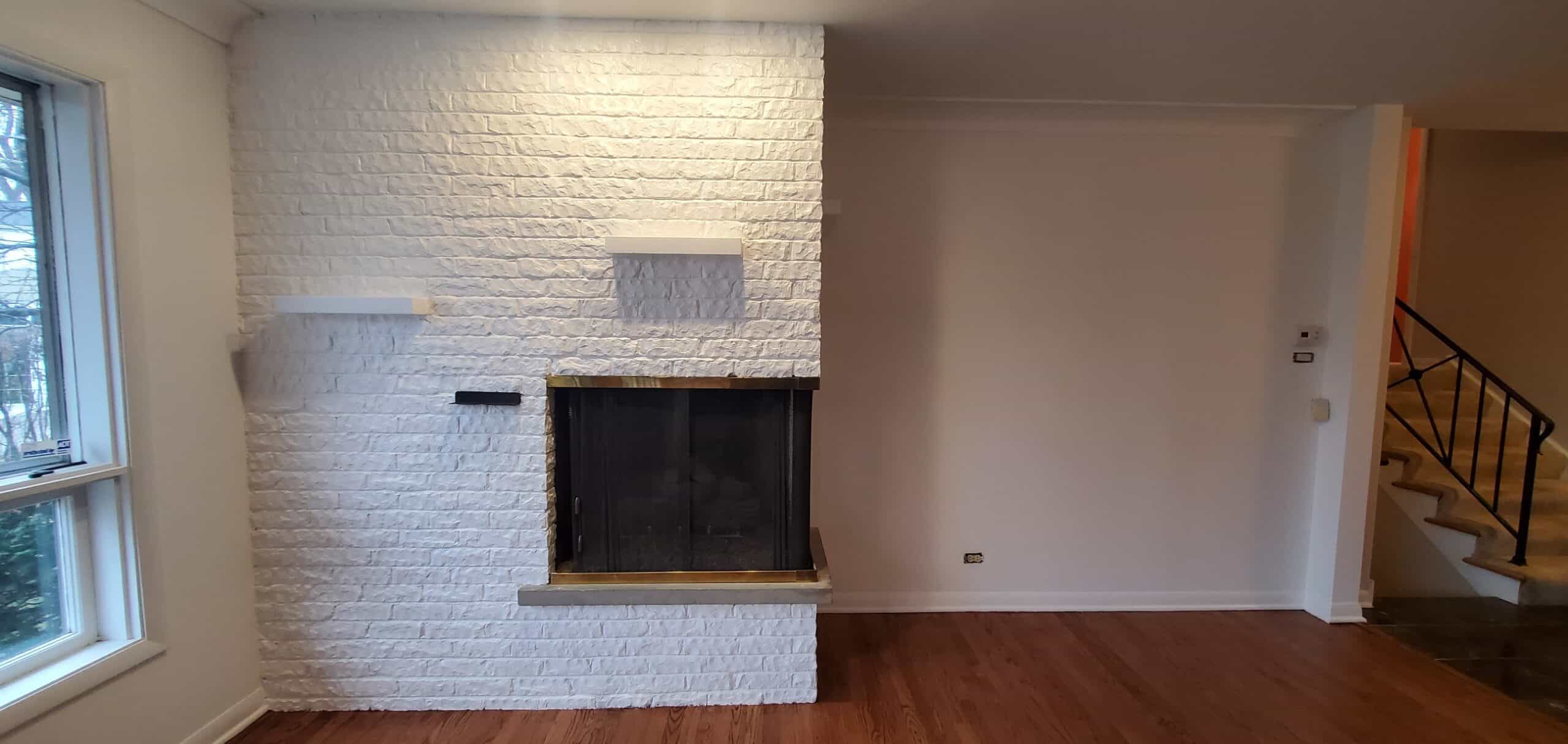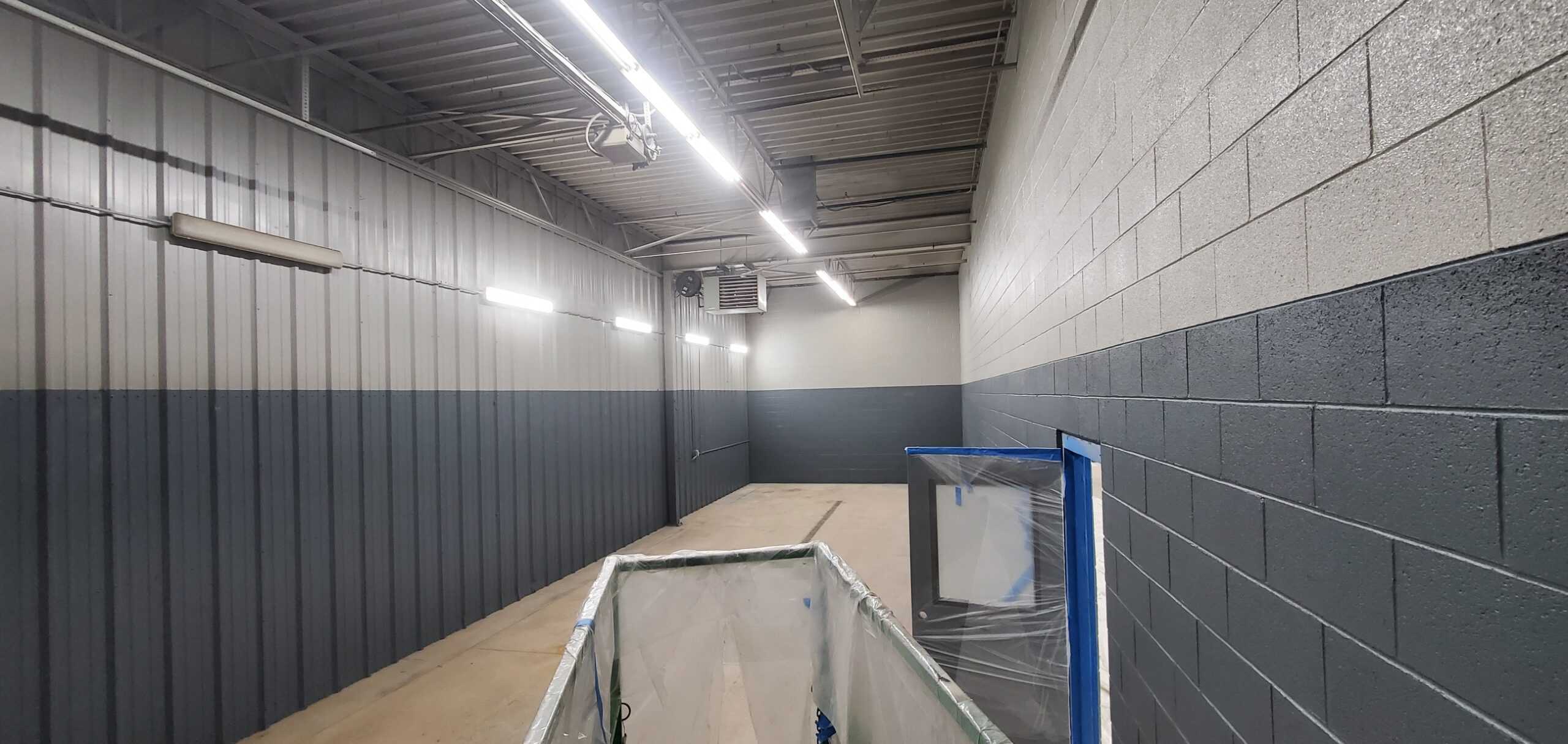When it comes to interior house painting, details matter, particularly those often-overlooked yet vital elements like molding and trim. Though they may seem insignificant at first glance, molding and trim are pivotal in framing a room’s aesthetic and accentuating its architectural features. Painting molding and trim with care and precision can transform a space, adding depth and character.
In this comprehensive guide, we delve into the nuances of painting them, a task that, when done correctly, can elevate your home’s interior to a new level of elegance. We’ll explore techniques that ensure a professional-looking finish, discuss the right tools for the job, and provide tips to avoid common pitfalls.
Whether you’re a seasoned DIY enthusiast or a novice taking on your first home improvement project, this post will equip you with the knowledge and skills needed to execute your vision flawlessly.
A Step-by-Step Guide to Painting Molding and Trim

What Are Molding and Trim?
Molding and trim are not just decorative elements; they are the subtle details that bring a room’s design to life. Acting as architectural highlights, they frame windows, outline doors, and elegantly skirt the junctions where walls meet floors, often seen as baseboards. In spaces where the ceiling meets the wall, crown molding adds a touch of grandeur. These elements play a pivotal role in defining the style and feel of a room.
The colors and finishes used on molding and trim can either subtly complement the overall aesthetic or boldly contrast to make a statement. The right paint job on these features is crucial for achieving a polished, cohesive look that can enhance the overall ambiance of your space. Whether they are ornate or simple, painting them with precision is key to elevating the overall aesthetic of your home.
Why Do You Need to Paint Molding and Trim Properly?
Properly painting molding and trim is essential because these elements act as the defining accents that subtly but significantly enhance your space. They don’t just complement your decor; they frame it, creating a visual harmony that ties the room together. A skillfully executed paint job on molding and trim can dramatically elevate the entire room’s ambiance, adding a layer of sophistication and depth.
These features, when painted correctly, can make colors pop, add dimension to flat walls, and draw the eye to architectural details. They are like the finishing touches of jewelry to an outfit – small in scale but immense in impact. By giving them the attention they deserve, you can transform an ordinary room into an extraordinary space, enhancing its overall appearance and feel.
Preparing to Paint
Gathering Your Supplies
Before getting started on your painting project, it’s important to gather all the necessary supplies to ensure a smooth process. This includes selecting high-quality paint that is both durable and easy to clean, as trim areas are prone to accumulating dust and fingerprints. Choose brushes that are appropriate for the size and style of your molding and trim. A variety of sizes helps in achieving precision.
Don’t forget to include painter’s tape in your toolkit – it’s essential for protecting adjacent wall surfaces and achieving sharp, clean edges. Also, a steady hand is invaluable for those finer details, ensuring your work is neat and professional.
Prepping the Area
The key to a flawless paint job starts with proper preparation of the area. Begin by cleaning the surfaces of your molding and trim thoroughly. This step is crucial as any lingering dust, dirt, or grime can hinder the paint’s ability to adhere properly, leading to a finish that’s less than smooth.
Once cleaning is complete, use painter’s tape to meticulously cover adjacent walls, ceilings, or floors. This not only protects these surfaces from accidental paint strokes but also helps in creating those crisp, clean lines that define expertly painted trim. Proper preparation sets the stage for a painting job that’s neat, efficient, and produces high-quality results.

The Painting Process
Technique Matters
The technique you use in painting molding and trim is crucial for achieving a professional finish. Start by applying paint in long, even strokes, ensuring each stroke is smooth and consistent. This method helps in avoiding streaks and ensures an even distribution of paint. When dealing with molding that has intricate designs or patterns, opt for a smaller brush. This allows for precise application in tight corners and detailed areas, ensuring every nook and cranny is neatly covered.
Also, it’s important to apply paint in multiple thin layers rather than a single thick coat. Two thin coats of paint provide better coverage, dry more evenly, and are less likely to chip or peel over time compared to one thick coat. This approach enhances durability and ensures a more refined, professional look.
Drying and Reapplying
A crucial yet often overlooked aspect of painting is allowing adequate drying time between coats. It’s tempting to rush this process, especially when you’re eager to see the final result, but patience is key here. Insufficient drying can lead to a tacky finish, making the second coat difficult to apply smoothly and increasing the likelihood of imperfections.
Always refer to the paint manufacturer’s recommendations for drying times, as this can vary based on the type of paint and environmental conditions. In some cases, it might be necessary to wait overnight to ensure the first coat is completely dry before applying the second. This patience pays off in the long run, as it contributes significantly to achieving a flawless, long-lasting finish on your molding and trim. Remember, good things come to those who wait!
Tips and Tricks
Consistency is Key
Achieving an even and smooth finish on molding and trim requires maintaining a consistent technique throughout the painting process. This includes keeping a steady hand and applying uniform pressure with each brushstroke. Consistency in your approach ensures that the paint is evenly distributed, preventing patchy or uneven areas.
If you’re painting over a darker color, it’s important to apply a layer of primer first. This step is crucial as it helps in masking the underlying color and ensures that the true hue of your new paint is accurately represented. The primer also improves paint adhesion, resulting in a more durable and long-lasting finish.
Avoiding Common Mistakes
One of the challenges in painting molding and trim is avoiding common mistakes like drips and streaks, which can mar an otherwise perfect finish. Vigilance is required throughout the painting process. If you spot a drip, it’s important to smooth it out immediately with your brush, as leaving it to dry can create unsightly bumps or ridges that are difficult to correct later. Streaks can be minimized by ensuring your brush is evenly loaded with paint and not over-saturated.
Additionally, good lighting is essential when painting. Adequate lighting helps in spotting and correcting imperfections as you go, allowing for a more refined finish. By being mindful of these potential issues and addressing them promptly, you can achieve a clean, professional look.
Finishing Touches
After the paint has thoroughly dried, take the time to carefully inspect your work. Look for any missed spots or areas where the coverage may be uneven. These small imperfections, if left unaddressed, can detract from the overall quality of your work. Touch them up as needed to ensure a consistent and flawless finish.
Another critical step is the removal of the painter’s tape. This should be done slowly and carefully to avoid ripping off any dried paint along with it. Gently pull the tape back on itself at a 45-degree angle for the best results.
Conclusion
Painting molding and trim may seem daunting, but with the right approach, it’s a project that can dramatically enhance your interior spaces. Take your time, focus on the details, and the results will speak for themselves. Remember, it’s these small elements that tie a room’s design together.
If you’re looking to bring this level of transformation to your home but feel hesitant to take on the task alone, reach out to J&B Painting.
As experts in the field, we specialize in bringing your vision to life with precision and care. Our team of professionals is dedicated to delivering top-quality results, ensuring every detail is attended to with the utmost craftsmanship. Whether it’s molding, trim, or a full room makeover, we’re here to help.
Contact us for a free estimate and experience the difference that expert hands can make in your home. Call J&B Painting at (248) 599-0996 and take the first step towards a beautifully transformed space.



